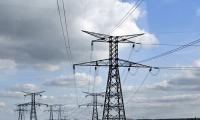Pakistan makes small input to total global greenhouse gas (GHG) emissions, less than one percent, but is among the countries most vulnerable to climate change. Pakistan has very low technical and financial capacity to overcome its adverse impact. Coastal areas bordering the Arabian Sea in the south of Pakistan will be at the greatest risk due to increased flooding from the sea and in some cases rivers. In the Himalayas, glacier melt is projected to increase and flooding will affect water resources within the next two to three decades. This will be follow by decreased river flows over time as glaciers recede.
Availability of fresh water is also predicted to be reduced which will lead to biodiversity loss and reduce of availability of fresh water for the population. Being a mainly agriculture economy, climate change is estimate to decrease crop yield in Pakistan, which in turn will affect livelihood and food production. Combining the decreased yield with the current rapid growth and urbanization in the country, the danger of hunger and food security will remain high. Due to droughts and floods, endemic mortality and morbidity because of diseases will be high. Cholera will also aggravate due to increase in costal water temperatures. The change in climate will also exacerbate the existing social inequalities of resource use and intensify social factors leading to displacement, conflicts, instability of people and changes in the migration pattern.
Hadia Aziz
Islamabad
Kite strings may seem harmless, but they can actually be quite lethal. Traditionally made from materials like cotton...
Criminals and crime tend to become widespread in societies with prevalent injustices, exploitation and wide economic...
This letter refers to the news report ‘Proposal to end one tax appellate forum to free up Rs2.7tr stuck in...
This letter refers to the editorial ‘Abuse with impunity’ on minority rights abuses in Pakistan. The piece is...
The widespread chewing of gutka across the country is a serious public health problem. Overuse of gutka and similar...
Terrorists, after blocking a certain point of the Quetta-Nushki-Taftan N-40 National Highway, began stopping and...







